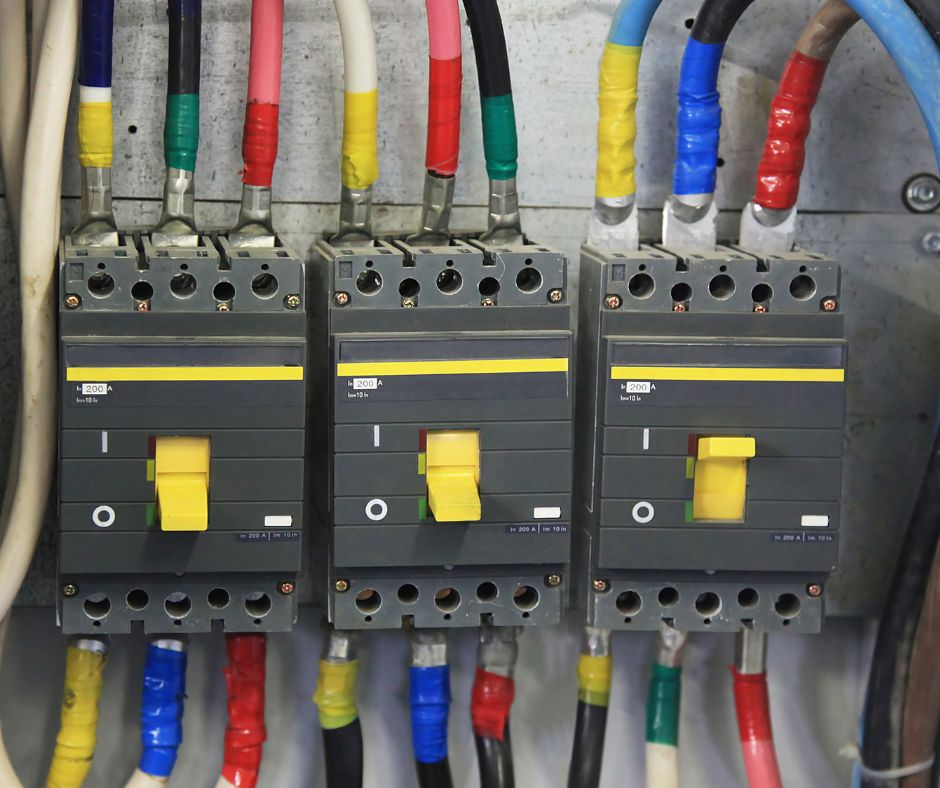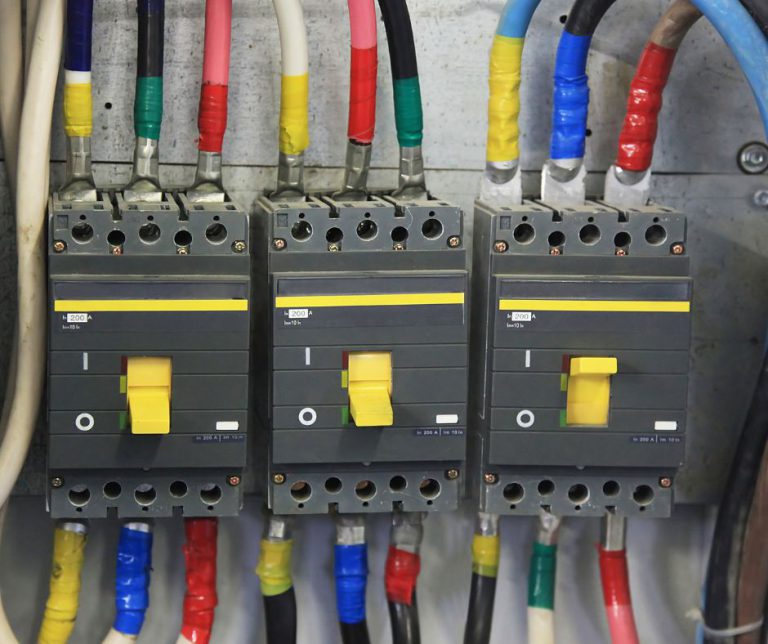Why Electrical Insulation Tape is Essential for Electrical Safety in Homes and Businesses
Electrical insulation tape plays a crucial role in safeguarding various types of electrical wires and cables, making it an essential tool in both residential and commercial settings. Commonly referred to as insulating tape, this vital accessory prevents electrical shorts and protects against moisture, dust, and abrasion. By ensuring that your electrical systems remain secure, this tape helps maintain operational integrity and safety. Understanding its importance not only aids in avoiding potential hazards but also contributes to a well-organized and efficient workspace, fostering higher productivity and safety standards in your electrical projects.
Available in numerous sizes, lengths, and colors, electrical insulation tape is crafted from various materials tailored for specific applications. This wide array of options enhances insulation effectiveness and simplifies cable organization through intuitive color-coding. By utilizing different colors, you can streamline your electrical tasks, allowing for quick identification of specific wires, which ultimately boosts productivity and organization in any electrical undertaking, whether at home or in a professional environment.

Identifying the Conditions Under Which Electrical Tape Can Melt
Understanding the circumstances that lead to electrical tape melting is essential to prevent potential hazards. This article will thoroughly explore the specific temperature thresholds associated with electrical tape, outline the various conditions that may cause melting, and identify critical signs of overheating that require vigilance. Recognizing these factors is vital to the safe and effective use of electrical insulation tape across different applications, ensuring that you can confidently manage electrical projects without compromising safety.
Temperature Tolerance of Electrical Tape: Ensuring Safe Use in Electrical Applications
Like many materials, electrical tape has specific temperature limits that must be acknowledged to guarantee safe usage. Most standard varieties can withstand temperatures of approximately 80°C, while certain heavy-duty options are engineered to endure slightly higher temperatures. When environmental conditions exceed these critical limits, the structural integrity of the tape may begin to deteriorate, potentially leading to failures that compromise safety. Understanding these temperature thresholds is essential for maintaining the reliability and effectiveness of your electrical applications.
As temperatures rise and approach the maximum tolerance, the effectiveness of electrical tape begins to decline. This degradation can manifest in various ways, including melting, a sticky or gooey residue, or, in extreme cases, the complete failure of the tape. Being aware of these temperature limitations is crucial for ensuring safety and allows for the successful completion of projects without incurring unnecessary risks or hazards. Furthermore, for environments that frequently experience extreme temperatures, consider specialized high-temperature variants of electrical tape.
For instance, heat-resistant tape, crafted from materials such as fiberglass or silicone, can withstand temperatures reaching up to 200°C or even higher, making it an optimal choice for applications subjected to intense heat and demanding conditions.
Also Read: Keep Your Pets Safe Around Electricity
Request Your Quote Today!
Inquire About Our FREE Electrical Inspections

Key Factors Leading to the Melting of Electrical Tape
Electrical tape can melt due to a variety of factors, primarily stemming from exposure to extreme heat. Understanding these causes is crucial for ensuring the safe and effective use of this essential tool in electrical work. Below are some common reasons that contribute to tape melting:
The Effects of High Heat Exposure on Electrical Tape Performance
The primary reason for melting electrical tape is exposure to elevated temperatures. If the tape is positioned near hot surfaces, engines, or components that generate heat, it can begin to soften, bubble, or even melt entirely. Furthermore, electrical systems like power circuits may produce excess heat beyond the tape’s rated capacity, particularly during malfunctions or overload situations. Therefore, when working with electrical tape in proximity to high-temperature areas, verifying the temperature ratings of the tape is essential to prevent potential failures and ensure safety in your electrical installations.
Understanding Environmental Factors That Degrade Electrical Tape
Electrical tape is not designed to last indefinitely. Over time, both the adhesive and the tape material can degrade, especially when exposed to UV light, moisture, or other harsh environmental conditions. This degradation can severely impair the insulating properties of the tape. As the tape ages, it may lose its effectiveness and become increasingly vulnerable to melting, even at lower temperatures than it would typically withstand. Regular inspections for signs of aging or damage are vital to maintain safety and performance in all electrical applications.
Risks Associated with Improper Application Techniques for Electrical Tape
Applying electrical tape under inadequate conditions can lead to premature failure and compromised safety. For example, if the tape is wrapped too tightly, subjected to friction or heat, or overstretched during application, its performance may be significantly compromised. Additionally, wrapping the tape around sharp edges or applying it to components prone to overheating, such as light bulbs or electrical outlets, can create severe issues unless the tape is specifically rated for those applications.
Also Read: 10 Ways to Save On Power And Energy Costs
Recognizing Overheating Signs in Electrical Tape to Ensure Safety
If you suspect your electrical tape is overheating, there are several critical indicators to observe. Here are the most common signs that your tape may be melting or experiencing excessive heat:
Detecting a Sticky or Tacky Texture in Overheated Electrical Tape
A notable change in texture, especially a sticky or tacky feel, is often one of the earliest signs that electrical tape is melting. This alteration can act as an early warning of further degradation, signaling that the tape’s insulation capabilities may no longer be reliable. Recognizing this change early can help prevent further complications related to electrical safety.
Observing Discoloration as a Warning of Heat Damage in Electrical Tape
When electrical tape overheats, it may exhibit significant discoloration. You might notice a shift from its usual black or colored appearance to shades of brown, dark gray, or even black. This change occurs as excessive heat causes the tape’s PVC or other materials to break down. Early identification of this issue is crucial to prevent additional damage to your wires, as unresolved issues could lead to melting or even create severe fire hazards that endanger safety.
Identifying Bubbling or Distortion as Indicators of Excessive Heat
If you notice that electrical tape begins to bubble, distort, or warp, it suggests that heat is adversely affecting its structure. This typically occurs when heat causes the adhesive or plastic layers to separate or degrade. The surface may appear wavy or uneven, indicating that temperatures have exceeded safe levels. Upon observing these bubbles, it is advisable to consult an electrician for a comprehensive evaluation and potential corrective actions.
Recognizing a Burning Smell as a Critical Warning Signal
A burning odor near electrical tape is a serious warning sign that should not be overlooked. This smell may resemble melting plastic or burning rubber. When excessive heat breaks down the adhesive, the resulting fumes can pose a significant health risk. Do not ignore this crucial warning. If you detect a burning smell, it may indicate that the tape is on the verge of melting or even catching fire, necessitating immediate attention.
Detecting Visible Smoke as a Major Indicator of Danger
Should you see smoke emanating from the electrical tape, it is a clear indication that heat levels have far exceeded what the tape can safely tolerate. Smoke serves as a strong signal that the tape has likely begun to melt or may even be igniting. At this critical juncture, it is essential to immediately disconnect the power source and contact your electrician for urgent assistance to avoid hazardous situations.
Remember – Never use water to extinguish an electrical fire. Instead, use a CO2 fire extinguisher for safety.
Safety Protocols to Follow if Your Electrical Tape Melts
In the unfortunate event that your electrical tape melts, the first step is to disconnect any power sources or turn off any equipment to ensure safety.
Prioritizing safety is of utmost importance, as electrical hazards can pose severe risks to both life and property. By taking immediate action, you can help prevent further complications and ensure a safer environment.
After securing the area, it is wise to consult your electrician for expert guidance. If a professional initially installed the tape, they should inspect the area for any underlying electrical issues that may have contributed to the problem, ensuring comprehensive safety and functionality across all electrical systems.
Considering Effective Alternatives to Electrical Tape for High-Temperature Applications
If you frequently operate in environments where temperatures exceed the limits of standard electrical tape, it is prudent to explore alternative solutions by consulting your electrician about suitable options. Here are several alternatives worth considering:
- Heat-resistant silicone tape: Specifically designed to withstand elevated temperatures, this type of tape is ideal for applications where heat presents a significant concern.
- Fiberglass tape: A durable alternative that can endure extreme temperatures without compromising performance or safety.
- Mica or ceramic insulation: For optimal thermal protection, specialized insulations such as mica or ceramic are excellent options to consider.
Understanding the Risks Associated with Melting Electrical Tape
In summary, electrical tape can indeed melt, primarily due to excessive heat exposure. Recognizing the temperature limits of your tape and ensuring the selection of the appropriate type for your specific application are critical steps in averting potential issues. By remaining vigilant for signs such as discoloration, stickiness, or unusual odors, you can take prompt action to mitigate risks. Always prioritize safety and do not hesitate to reach out to your local electrician for expert advice whenever necessary.
Request Your Quote Today!
Inquire About Our FREE Electrical Inspections

The Article: Does Electrical Tape Melt? Here’s What You Need to Know first appeared on https://writebuff.com
The Article Electrical Tape Melting: Essential Facts You Should Know Was Found On https://limitsofstrategy.com
References:
Electrical Tape Melting: Essential Facts You Should Know





I really enjoyed your insights on the importance of electrical insulation tape; it’s fascinating to think about how such a simple tool can have such a profound impact on safety and efficiency. It reminds me of a project I worked on a few years back where we underestimated the importance of proper insulation for some wires in a home renovation. We thought that just keeping everything neat would be enough, but we learned the hard way that without a solid protective measure like electrical tape, we ended up facing some minor shorts that delayed the project and increased costs.
It’s interesting how experiences like yours highlight the real-world implications of something we often take for granted. The takeaway here is spot on: electrical insulation isn’t just about tidiness; it’s about protecting both people and investments.
It’s interesting to hear about your experience with electrical insulation during your home renovation. It’s one of those areas where we often focus more on aesthetics or organization but overlook the critical role that protective measures play. Your situation highlights a common oversight. Many of us tend to prioritize getting things visually tidy; however, safety features like insulation can sometimes seem like an afterthought, even though they’re essential for preventing costly mistakes down the line.